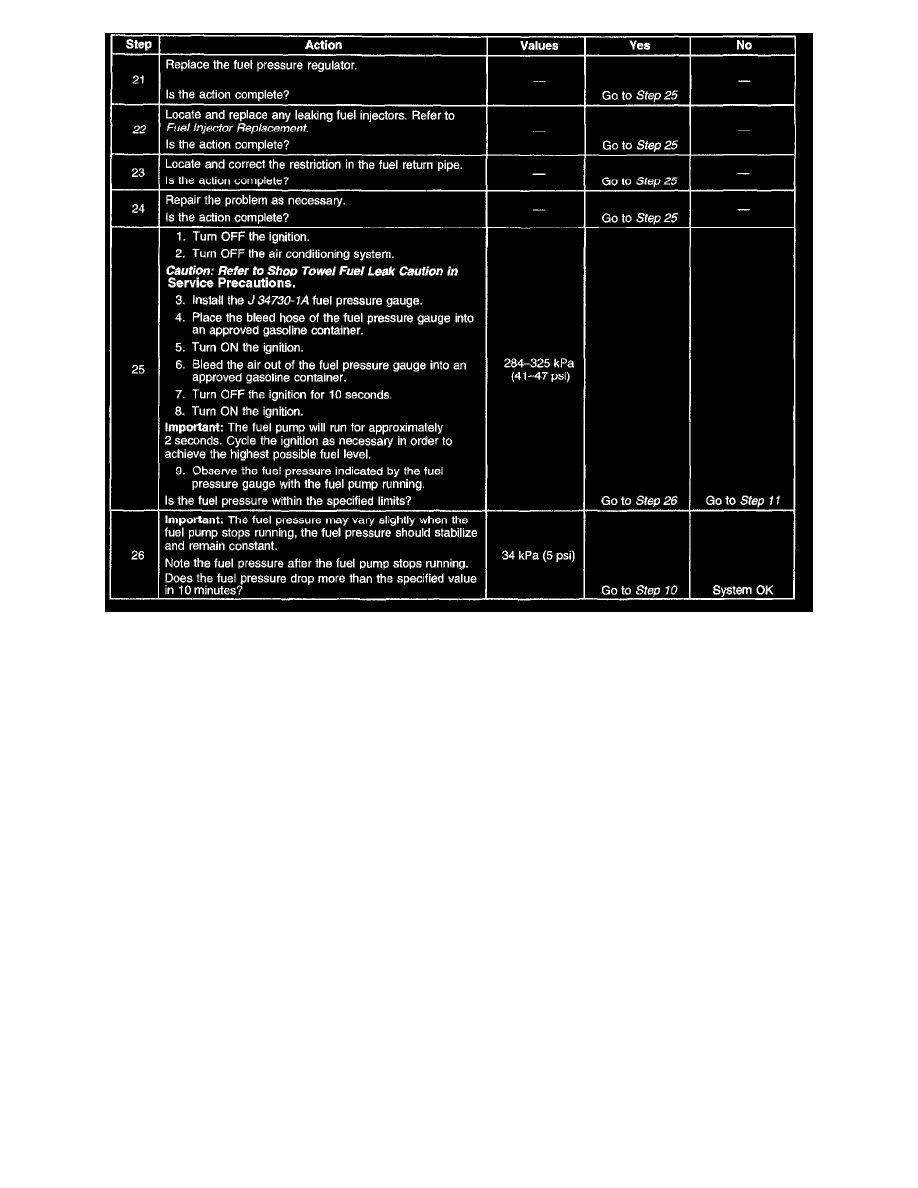DeVille DHS V8-4.6L VIN Y (2000)

Steps 21 - 26
The numbers below refer to the step numbers on the diagnostic table.
2. To relieve the fuel pressure, refer to Fuel Pressure Relief Procedure. With the ignition switch ON and the fuel pump running, the fuel pressure
indicated by the fuel pressure gauge should be 284-325 kPa (41-47 psi). This pressure is controlled by the amount of pressure the spring inside the
fuel pressure regulator can provide. See:
3. A fuel system that drops more than 5 psi in 10 minutes has a leak in one or more of the following areas:
^
The fuel pump check valve
^
The fuel pump flex pipe
^
The valve or valve seat within the fuel pressure regulator
^
The fuel injectors
5. Fuel pressure that drops-off during acceleration, cruise, or hard cornering may cause a lean condition. A lean condition can cause a loss of power,
surging, or misfire. A lean condition can be diagnosed using a scan tool. If an extremely lean condition occurs, the oxygen sensors will stop
toggling. The oxygen sensor output voltages will drop below 500 mV. Also, the fuel injector width will increase.
IMPORTANT: Make sure the fuel system is not operating in the Fuel Cut-Off Mode. This can cause false indications by the scan tool. Refer to
Engine Scan Tool Data List. See: Computers and Control Systems/Testing and Inspection/Scan Tool Testing and Procedures/Scan Tool Data, Normal
Values and Definitions
8. When the engine is at idle, the manifold pressure is low (high vacuum). This low pressure (high vacuum) is applied to the fuel pressure regulator
diaphragm. The low pressure (high vacuum) will offset the pressure being applied to the fuel pressure regulator diaphragm by the spring inside
fuel pressure regulator. When this happens, the result is lower fuel pressure. The fuel pressure at idle will vary slightly as the barometric pressure
changes, but the fuel pressure at idle should always be less than the fuel pressure noted in step 2 with the Engine OFF.
12. A rich condition may result from the fuel pressure being above 376 kPa (55 psi). A rich condition may cause a DTC P0132 or a DTC P0172 to
set. Driveability conditions associated with rich conditions can include hard starting (followed by black smoke) and a strong sulfur smell in the
exhaust.
13. This test determines if the high fuel pressure is due to a restricted fuel return pipe or if the high fuel pressure is due to a faulty fuel pressure
regulator.
15. A lean condition may result from the fuel pressure being below 333 kPa (48 psi). A lean condition may cause a DTC P0131 or a DTC P0171 to
set. Driveability conditions associated with lean conditions can include hard starting (when the engine is cold), hesitation, poor driveability, lack of
